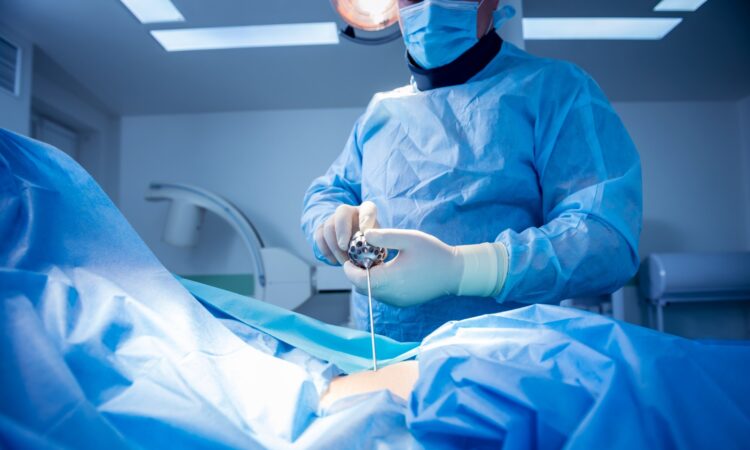
Spinal disc replacement surgery can offer significant relief from chronic pain and may help restore mobility. While this surgery has a high success rate, like any medical procedure, it carries potential risks and complications. Dr. Larry Davidson, an expert in spinal surgery, understands that these risks and the strategies to mitigate them can help patients make informed decisions and take preventive measures to enhance their safety and recovery.
Common Risks in Spinal Disc Replacement Surgery
Implant Misalignment or Displacement: Proper positioning of the artificial disc is important, as misalignment or displacement may contribute to instability or persistent pain. This risk can be influenced by factors such as bone density and implant type and it is more likely in cases where complex spinal curvature exists. Misalignment may also lead to accelerated wear on the implant, increasing the likelihood of needing revision surgery.
Infection: Infections are a risk with any surgery and spinal procedures can be particularly concerning due to their proximity to nerves and the spine. While infections are rare, they can lead to prolonged recovery times and additional interventions if they do occur. Preventing infection is an important consideration, and both surgeons and patients play roles in minimizing this risk through hygiene practices and postoperative care.
Nerve Damage: Spinal disc replacement requires close interaction with nerves, and there is a small risk of nerve damage during the procedure. T This may result in symptoms such as numbness, tingling or muscle weakness in the affected areas. In rare cases, nerve damage may lead to long-term neurological issues, affecting sensation and movement.
Implant Wear and Tear: Artificial discs are durable but not indestructible, and over time, they may wear down or fail. This wear can lead to inflammation, pain and a decrease in range of motion, requiring revision surgery to replace or adjust the implant. Factors like the patient’s activity level and spinal alignment may impact the longevity of the artificial disc.
Blood Clots: Surgical procedures, especially those involving the spine, can increase the risk of blood clots. In some cases, these may develop in the legs and, in rare instances, travel to the lungs. Clot formation is more common in patients who are inactive post-surgery or have a personal history of clotting issues.
Preventive Strategies for Reducing Risks
- Advanced Preoperative Planning
Thorough preoperative planning and imaging are essential in minimizing complications. Surgeons use detailed CT and MRI scans to assess the patient’s anatomy, identify potential risk factors and plan the precise positioning of the implant. This step is important for reducing the likelihood of misalignment and supporting implant stability.
- Minimally Invasive Techniques
When possible, surgeons may opt for minimally invasive techniques, which involve smaller incisions and cause less disruption to surrounding tissue. Minimally invasive approaches may help to reduce infection rates, blood loss and recovery time. The smaller incisions also reduce the chance of nerve damage and complications associated with larger surgical sites.
- Intraoperative Navigation and Robotic Assistance
Utilizing intraoperative navigation and robotic-assisted systems, such as Mazor X, helps surgeons achieve precise alignment and positioning of the artificial disc. These tools guide each movement, potentially reducing the likelihood of misalignment and minimizing the risk of unintentional damage.
- Postoperative Antibiotics and Hygiene Protocols
Preventing infection involves both preoperative and postoperative measures. Patients are often given antibiotics before and after the procedure, and surgical teams follow strict hygiene protocols to maintain a sterile environment. After surgery, patients are instructed on how to care for the incision site to prevent infection.
- Encouraging Early Mobilization and Physical Therapy
Early mobilization, guided by a physical therapist, encourages circulation and reduces the risk of blood clots. Walking and gentle movement exercises are often introduced soon after surgery to help patients gradually regain strength, support their range of motion and reduce the likelihood of clot formation.
- Regular Follow-Up and Monitoring
Routine follow-ups after spinal disc replacement surgery can aid in the early detection of potential complications. Regular imaging and check-ups ensure that any issues are addressed promptly, often preventing the need for more invasive interventions down the line.
Patient Education and Proactive Involvement
Patient involvement in the surgical process plays an important role in minimizing risks. Educating patients on what to expect, how to manage recovery and the importance of follow-up care empowers them to make proactive choices for a smoother recovery. Understanding the signs of infection or blood clot symptoms may prompt patients to seek timely care, which can be helpful in avoiding complications.
Similarly, adhering to a postoperative exercise routine may support circulation and spinal health, which could reduce the likelihood of complications. Patients are also encouraged to follow dietary guidelines that promote healing, as proper nutrition aids in tissue repair and reduces inflammation. Staying well-hydrated is another simple but effective step that supports circulation and minimizes discomfort. Additionally, keeping open communication with healthcare providers allows for timely adjustments in recovery plans based on individual progress and needs.
When to Seek Immediate Medical Attention
While minor discomfort is normal after spinal disc replacement surgery, certain symptoms may indicate complications that could benefit from prompt medical attention. Patients should contact their healthcare provider if they experience severe pain, fever, swelling or redness at the incision site, numbness or sudden shortness of breath. Prompt attention to these symptoms can make a significant difference in managing and resolving issues before they escalate.
Spinal disc replacement surgery offers significant benefits, but understanding the potential risks and preventive strategies is essential for achieving the best possible outcomes. Advanced surgical techniques, careful planning and patient involvement can help to reduce the risk of complications, supporting a safer and potentially more successful recovery. Educating patients about post-surgery care, including physical therapy and lifestyle adjustments, plays a crucial role in long-term success.
Dr. Larry Davidson remarks, “Spinal fusion procedures regularly involve the implantation of certain types of implants. A merger of AI and 3D printing could result in the production of an implant that uniquely serves the needs of a specific patient. Such a preparation would be done before a planned procedure based upon the imaging studies of the patient’s spine. Also, emerging minimally spinal surgical techniques have certainly changed the way that we are able to perform various types of spinal fusions. All of these innovations are aimed at allowing for an improved patient outcome and overall experience.”
By working closely with their healthcare team, patients can prepare for a positive journey toward potential pain relief, mobility improvements and a better quality of life. With the right approach, this innovative procedure can provide lasting benefits that empower patients to regain control of their daily activities.




